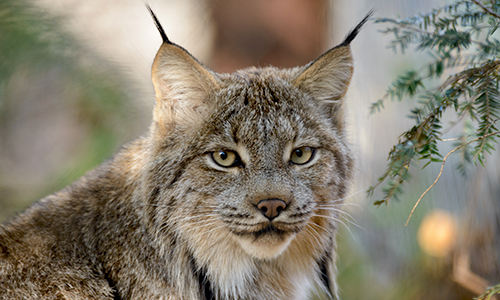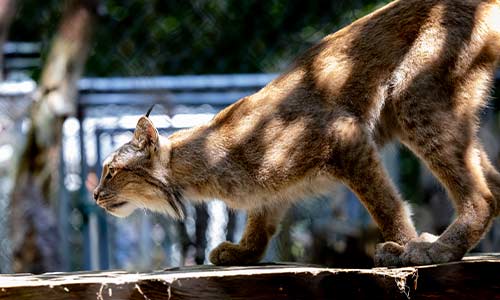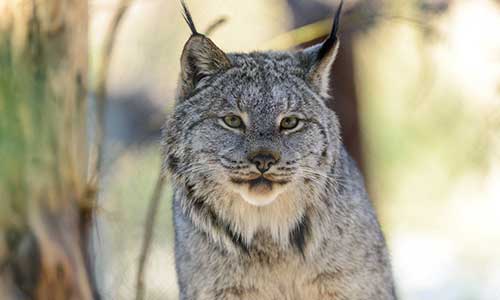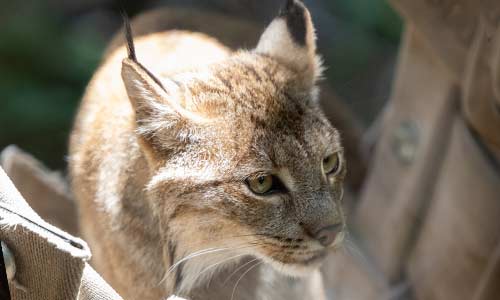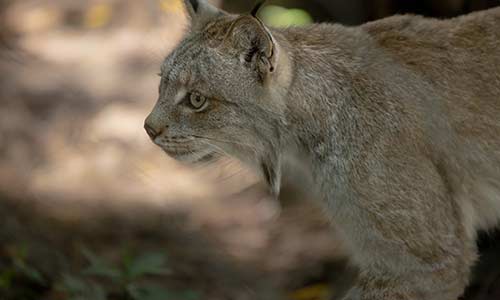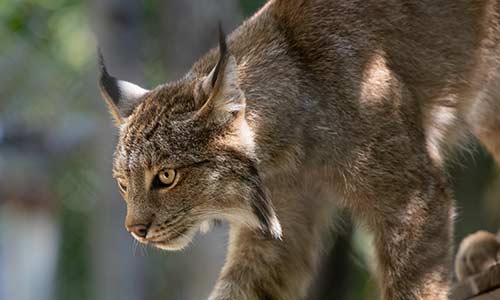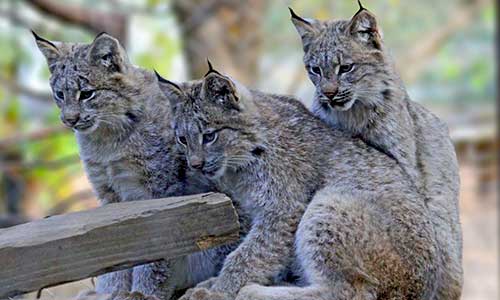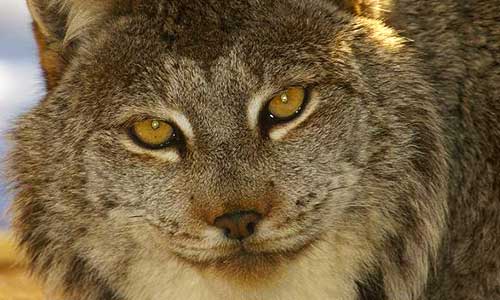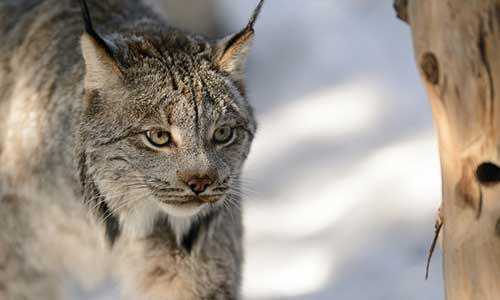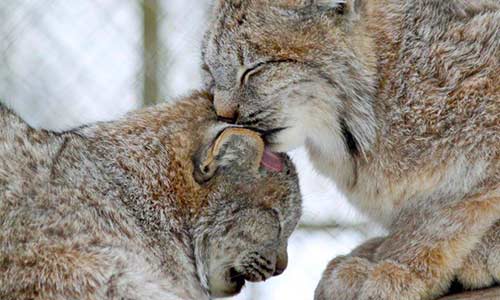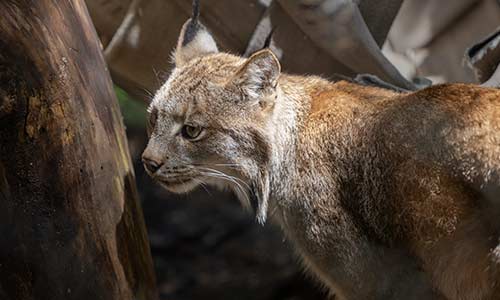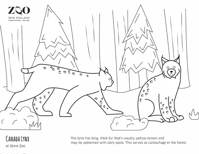Canada Lynx
Lynx canadensis
About the Canada Lynx

Geographic Range:
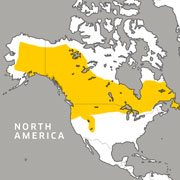
Class: Mammalia
Order: Carnivora
Family: Felidae
Genus: Lynx
Species: canadensis
The Canada lynx has long, thick fur that's typically yellowish-brown in color and possibly patterned with dark spots. It has wide paws, covered in fur to easily maneuver over snow and ice in the cold Canadian winters. The lynx has been admired since ancient times for its keen eyesight. The word lynx comes from the Greek word “leyssein” meaning “to see.”
Committed to Conservation
In Canada where the lynx is listed as a Species of Least Concern, they are threatened by habitat loss from logging and are frequently hunted for their fur, which is regulated by the Canadian government. In the United States, the lynx is listed as Threatened on the Endangered Species List, and hunting is prohibited.
Zoo New England participates in the Canada lynx Species Survival Plan. By sharing research and knowledge, participating institutions work together to establish guidelines that best ensure the health of captive populations, and with success, the survival of endangered species.
Canada Lynx Facts
Appearance:
The lynx has long, thick fur that’s usually yellow-brown and may be patterned with dark spots. This serves as camouflage in the forest. Their tails are short—so it doesn’t get snagged on low-hanging branches—with several dark rings and a dark tip. This tall cat has especially long hind legs which give it the appearance of being tilted forward. Lynx also have very large, densely furred feet, which may measure as wide as four inches across. These act as “snow shoes,” allowing them to walk easily in deep snow. Their ears are tipped with black hair tufts, and there’s often a flared ruff of fur around their necks.
Size:
Long legs and thick fur make this cat look much larger than it really is. Its head and body length is 31.5 to 39.25 inches, with a short 2 to 5 inch tail.
Males weigh 22 pounds; females weigh 19 pounds.
Diet:
In the wild, lynx primarily eat snowshoe hare, but they’ll prey on rodents, birds, fish and young deer.
Reproduction:
The breeding seasons lasts from February through March. The gestation period is 9 to 10 weeks. Litters average two to three kittens, but can be as high as five. Young remain with their mothers for up to a year, and they may stay with siblings for some time thereafter. Females reach sexual maturity at 21 months, males at 33.
Behavior:
Lynx are solitary and nocturnal, using their keen eyesight to stalk prey. They can climb trees, but prefer the ground. Lynx are good swimmers, sometimes crossing large rivers in search of prey. They establish territories varying in size that may overlap, but they’ll travel great distance outside their territory in search of food.
Role in their Habitat:
The lynx's population has been strongly associated with cyclical snowshoe hare population changes. Lynx are prey to cougars, wolves, wolverines and humans.
Habitat/Range:
Dense pine forest, but lynx may be found in rocky areas and the tundra, primarily in Canada. Their numbers substantially decrease in the more populous Southeast region. In the U.S., they’re found in Alaska, Western Montana, Northern Idaho and Northeastern Washington. When populations have been high in Canada, lynx have been reported in the Northern Plains and Great Lakes states, as well as in Wyoming, Oregon, Utah, Colorado and Maine.
Life Expectancy:
Average 15 years
Fun Facts
- Since ancient times, lynx have been admired because of their keen eyesight. The word lynx comes from the Greek word leyssein and translates, "to see." Lynceus, a Greek mythological hero, was said to have the ability to see through things.
- In Italy, The Academy of the Lynxes was formed in 1603 to seek truth and dispel the misunderstanding of superstition and ignorance. Galileo was one of the Academies’ earliest members.
- In the Native American tradition, the lynx is considered to be a problem-solver and the keeper of secrets.
You Can Find This Animal in the Yukon Creek
Lynx or Bobcat?
Lynx are frequently confused with bobcats. Lynx have longer ear tufts, legs, fur, and larger feet adapted for the snow. Bobcats are also said to be more aggressive than lynx.
You May Also Like
At Franklin Park Zoo:
At Stone Zoo:

